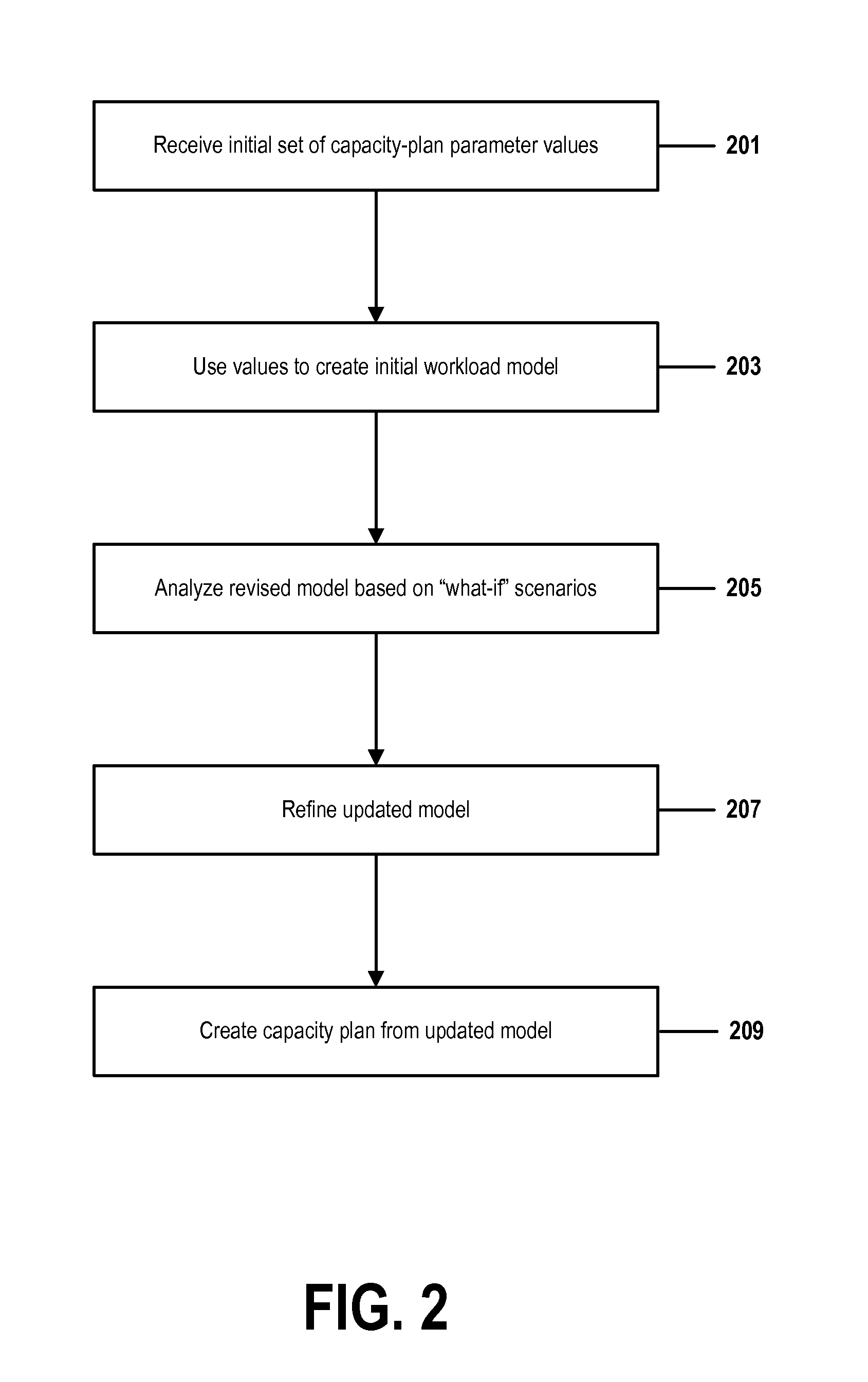Dynamically modeling workloads, staffing requirements, and resource requirements of a security operations center
a technology for security operations and workloads, applied in the direction of instruments, data processing applications, computing, etc., can solve problems such as complicated modeling
- Summary
- Abstract
- Description
- Claims
- Application Information
AI Technical Summary
Benefits of technology
Problems solved by technology
Method used
Image
Examples
Embodiment Construction
[0044]Planning or operating a business function like a Security Operations Center (SOC) may comprise modeling the SOC's future workload in order to better forecast staffing levels and other resources needed by the SOC in order to provide a desired level of service.
[0045]This modeling may be especially difficult for a business function like an SOC, which must quickly detect and respond to unplanned extrinsic events that: i) are discrete (that is, a likelihood of a second event occurring, or occurring at a particular time, is not a function of a likelihood of a first event occurring or occurring at a particular time); ii) have a low probability of occurring (thus potentially being irregularly distributed in time); and iii) are persistent (do not resolve themselves if they are not serviced within a certain period of time).
[0046]In this document, we will, for the sake of illustration, refer to embodiments of the present invention that are implemented for a SOC that identifies, analyzes,...
PUM
 Login to View More
Login to View More Abstract
Description
Claims
Application Information
 Login to View More
Login to View More - R&D
- Intellectual Property
- Life Sciences
- Materials
- Tech Scout
- Unparalleled Data Quality
- Higher Quality Content
- 60% Fewer Hallucinations
Browse by: Latest US Patents, China's latest patents, Technical Efficacy Thesaurus, Application Domain, Technology Topic, Popular Technical Reports.
© 2025 PatSnap. All rights reserved.Legal|Privacy policy|Modern Slavery Act Transparency Statement|Sitemap|About US| Contact US: help@patsnap.com



